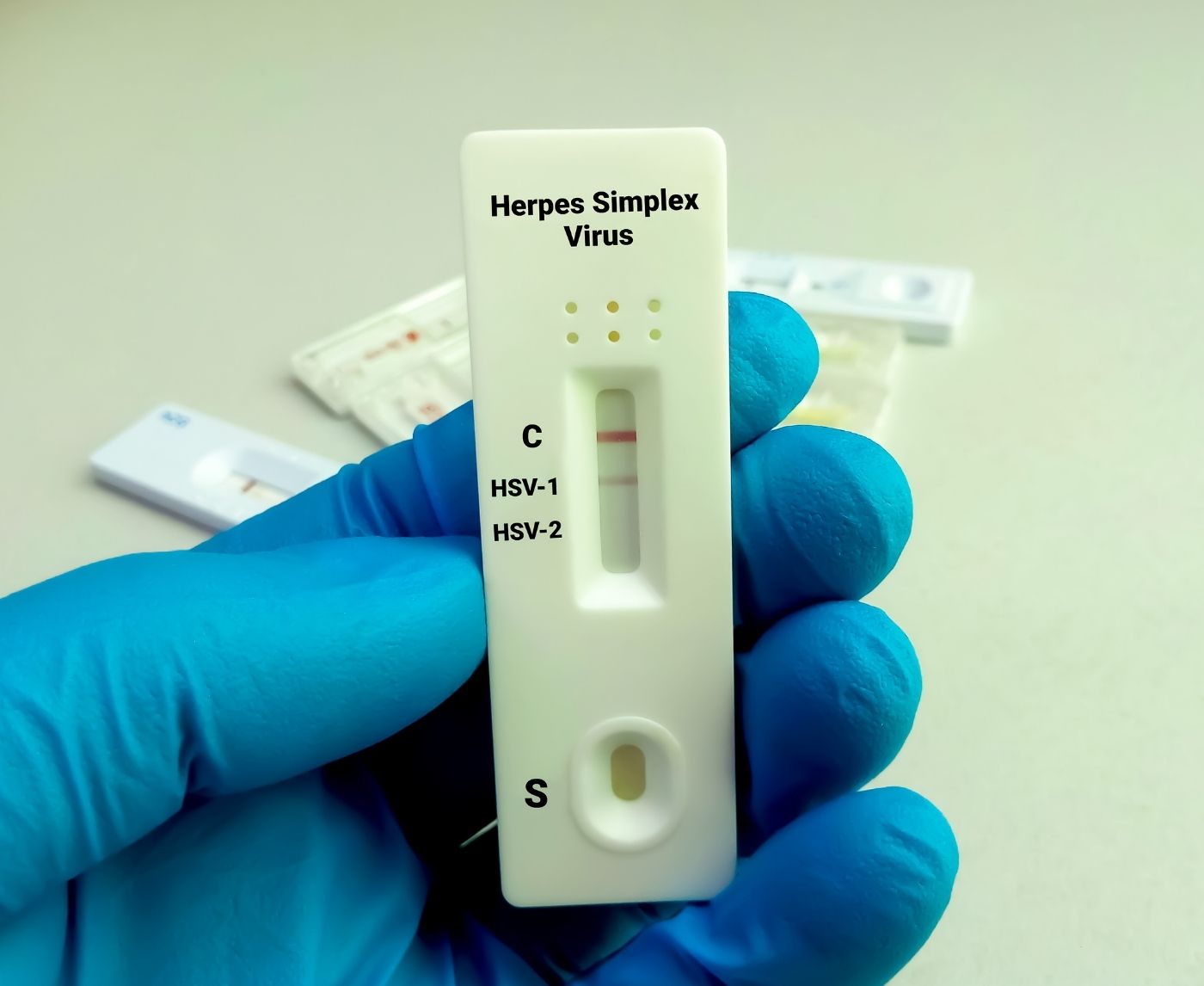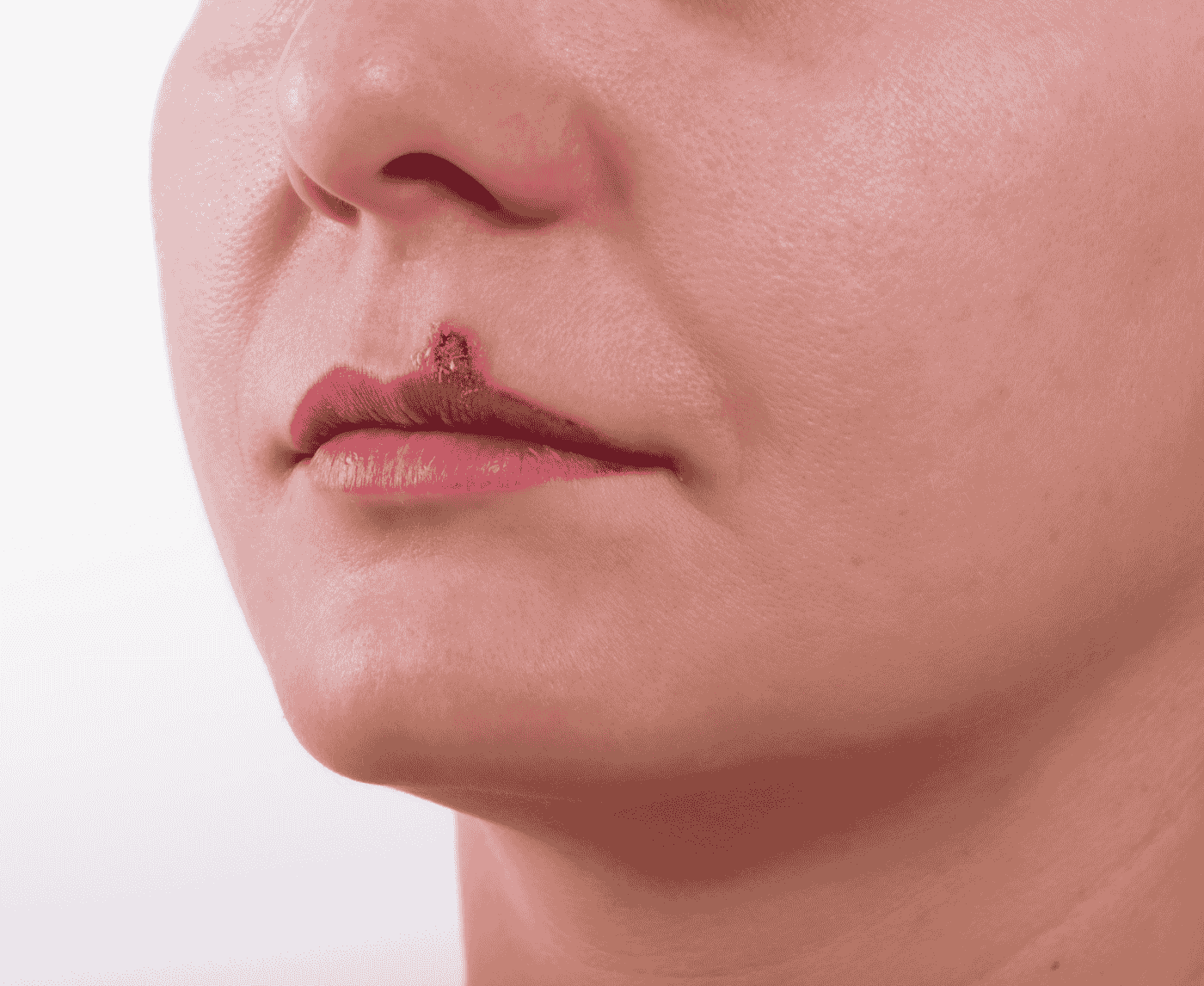Why So Many People Have Herpes and Don’t Even Know
Quick Answer: A faint test line on a herpes rapid test usually means the test is positive, but only if the control line also appears. If the control line is missing, the result is invalid. Always read results within the stated time window.
Who This Is For (And Why That Line Freaks Everyone Out)
Whether you ordered a kit out of urgency after a hookup or because something didn’t feel quite right “down there,” this guide is built for you, the overthinkers, the symptom-Googlers, the late-night testers who’d rather not deal with a clinic. Maybe you’ve never had an outbreak. Maybe you’re afraid this faint line means your world just changed. We get it.
Rapid STD tests, especially for HSV-2 (the most common cause of genital herpes), are popular because they’re quick, discreet, and private. But they come with their own set of stressors, namely, faint lines, invalid results, and instructions that sometimes feel more like puzzles than help. Our goal is to demystify that process and make sure your testing moment becomes a turning point toward clarity, not chaos.

People are also reading: Gonorrhea vs UTI Why You Might Be Treating the Wrong Thing
What Comes in a Herpes Rapid Test Kit?
Most at-home herpes test kits use a lateral flow cassette, similar to a COVID rapid test or pregnancy test. You’ll usually find these components inside:
Figure 1. Common herpes rapid test components. Kits may vary slightly by brand, but these tools are standard.
Store the kit at room temperature and do not expose the kit to water and heat sources. Kits may be invalidated if stored incorrectly, even if never used. You should always check the expiration dates after beginning the process.
Although brands vary minutely, the basic process for most HSV rapid tests goes as follows:
- You must wash your hands and disinfect your fingertip with the alcohol pad.
- Using the lancet, prick the fingertip, usually the ring finger or the middle finger.
- Take the sample of blood by using the pipette provided or directly placing the drop into the sample well designated as ‘S’.
- Add the buffer solution to the cassette, usually about 2 to 3 drops into the same well.
- Wait for the stipulated time, probably between 10 to 15 minutes, and then be able to read the results.
Each cassette includes a “C” line (control) and a “T” line (test):
- C Line: Confirms the test is working. This line MUST appear or the test is invalid.
- T Line: Appears if HSV antibodies are detected, this is the test result line.
If you don’t see the control line after waiting the full time, your test is invalid, even if a test line appears. This happens if the buffer wasn’t applied properly, the cassette was faulty, or the sample wasn’t enough.
Pro Tip: Don’t blow on the cassette to dry it or leave it in humid areas. And don’t interpret the results by holding the test up to a light, this creates false shadows that mimic faint lines.
What a Faint Line Actually Means
This is where most people spiral: the faint pink line that may or may not be a line depending on the angle, lighting, and whether you’ve stared at it too long. Let’s be real, herpes tests are notorious for ghost lines and barely-there indicators that send users Googling frantically.
Any line that can be seen in the test area (T) during the valid time window, no matter how faint, is a positive. This isn't a bug. It means that the test probably found antibodies, even in small amounts. Recent studies that confirmed this show that faint lines are usually linked to early or low-titer seroconversion, which is when your body is just starting to make antibodies that can be found.
However, if that line appeared after the time window or was only visible under bright light or manipulation, it could be an evaporation line, not a true positive. This is why timing and lighting matter. A controlled reading space is part of getting accurate results.
How to Read Your Herpes Test Like a Pro (Even If You're Panicking)
If you're still holding your test under a bathroom light, tilting it like it's a Magic Eye puzzle, take a breath. Interpretation anxiety is real, but you're not doomed to guesswork. Let’s decode those results with total clarity.
Figure 2. How to interpret herpes rapid test results. Always read within the test window using natural or bright indoor lighting. Never rely on changes after the 15–20 minute mark.
The most common confusion? A faint T-line that emerges after the valid time range. That’s likely a drying artifact, not a result. Trust the test only during the window listed in your instructions, usually 10–15 minutes post-buffer.
When the Test Looks “Weird” (Troubleshooting Results That Don’t Make Sense)
Let’s talk about the panic triggers:
- “Only the T line appeared, no control line!” → This test is invalid. It doesn’t matter what the T line says. Control line must appear to prove the test worked. Try again with a fresh kit.
- “There’s a shadow or streak, but no clear line.” → If it doesn’t look like a defined colored band, it’s likely not a real result. Blotches, bleeding ink, or partial smears are artifacts.
- “My positive line is super faint, almost invisible.” → If it showed up within the time window, it’s probably a low-antibody positive. Re-test with a second kit in 2–3 days or confirm via lab.
- “The test line disappeared after 30 minutes.” → Late fading is normal; results are not valid after the time window ends. Always photograph or write down your reading.
Still confused? Use our STD Test Kits homepage to chat with a real person, or try a fresh test in a better-lit, calmer environment. Lighting, humidity, and user stress all impact accuracy perception.
“I Thought I Got a Defective Test, It Wasn’t”
Leon, 31, took a herpes rapid test after noticing some itching and a single blister post-hookup. “I followed the steps, but the result line was so faint I thought maybe I didn’t add enough blood. I figured it was defective.”
“I left it on the counter and walked away. When I checked again later, the line was gone, so I tossed it. Turns out, it had actually been a positive, I just didn’t read it in time.”
When Leon went for a clinic test a week later, it came back positive for HSV-2. “I felt dumb, but no one teaches you how to trust these tiny strips.” His experience is common: missed or misread results happen, especially with early seroconversion when antibody levels are still building.
If in doubt, always confirm results with a second test, and take a photo of the strip within the reading window. That one picture could be your clarity when your anxiety spikes at 2AM.
Don’t Let Uncertainty Win
If you're unsure whether that faint line is telling the truth, there's a simple way to stop second-guessing: test again with confidence. Every test kit comes with detailed steps, and our Herpes Rapid Test Kit is designed to be simple, fast, and discreet.
Test in your own space. No judgment. No waiting rooms. Just answers you control.
Can You Trust a Herpes Rapid Test? Let’s Break It Down
One of the biggest fears after seeing a faint line is this: “What if it’s wrong?” It's a fair question, no test is 100% perfect, especially when you’re trying to test early or read results alone at home. But rapid tests for herpes, when used correctly and within the window period, are surprisingly reliable.
Let’s talk numbers. Most high-quality herpes simplex virus (HSV) rapid tests, especially those based on IgG antibody detection, boast a specificity of over 95% and a sensitivity around 85–90% after the full window period (usually 12–16 weeks post-exposure). That means:
- False negatives are more likely if you test too early or your immune system hasn't mounted enough of a response yet.
- False positives are less common, but can occur due to cross-reactivity, especially if you've had another viral infection recently.
If your faint line appeared within the test window, it’s most likely a true positive, but you still have the option to confirm it through lab testing (especially if you’ve never had symptoms or are unsure of your exposure).
When to Retest After a Faint Line (And Why It Matters)
Let’s say you saw a faint line and followed all the steps, but you’re not 100% convinced. Retesting isn’t about paranoia, it’s about biological timing. Here's how to think about it:
Figure 3. When to retest after a faint or questionable result. Testing isn't one-and-done, it's a process of gaining clarity.
Bottom line: if you’re early in the exposure window or unsure whether your test worked properly, retesting is both medically sound and emotionally smart. Just don’t let that nagging doubt sit in your chest, give yourself closure, not confusion.
What If You Test Positive, And Feel Like the World Crashed
Let’s get honest: a positive herpes result, even from a rapid test, can feel devastating. The stigma is huge. The silence around it is deafening. But here’s the real truth, you are not dirty, broken, or alone.
Herpes is one of the most common infections on the planet. The CDC estimates that about 1 in 6 people aged 14 to 49 in the U.S. have genital HSV-2, and many don’t even know it. Having herpes doesn’t define your worth, your desirability, or your right to pleasure and connection.
What matters most is how you take care of yourself and others from this moment forward:
- Get confirmatory testing if your results are unclear
- Start treatment if needed, many outbreaks can be managed easily
- Talk to partners with honesty and care (we have scripts for that)
- Join support spaces if you feel isolated (Reddit’s r/Herpes has real talk, not shame)
This is not a dead end, it’s a detour toward better sexual health literacy and body awareness. And you don’t have to walk it alone.
Take the Next Step with Certainty
Still unsure? Whether you're facing a faint line, no line, or just a gut feeling, 7-in-1 STD At-Home Test Kit offers discreet, comprehensive testing in one box. Quick. Clear. Empowering.
You deserve answers. You deserve support. And you deserve to breathe easier tonight.

People are also reading: You Got Tested… But Did They Actually Check for Everything?
FAQs
1. Does a faint line on my herpes test mean I have it?
If the line showed up during the test's time frame, even if it was very faint, it usually means that the test found herpes antibodies. Yes, even ghost lines count. It's like a pregnancy test: even if it's faint, it means something is going on. When in doubt? Check again with a lab or retest.
2. What if there’s no control line?
Game over. If the control line doesn’t show up, the test didn’t run properly. It’s like baking a cake without turning on the oven, you followed the steps, but nothing actually happened. Toss it and start fresh with a new test.
3. Can herpes tests give false positives?
It’s rare, but possible, especially if you’ve had other viral infections recently (like mono). That said, most false readings come from reading the test after the time window, not the test being “wrong.” Always read within 10–15 minutes and confirm if you're unsure.
4. What if I tested positive but I’ve never had a single symptom?
Totally possible. Most people with herpes don’t have obvious outbreaks, or they chalk them up to razor burn, yeast infections, or “just a weird bump.” A positive test just means your body recognized the virus at some point, not that you’re contagious 24/7.
5. I tested early. Should I test again later?
Definitely. Herpes antibodies take time to show up, usually weeks. If you tested within 3 weeks of exposure and got a negative or faint positive, retest around the 12-week mark for the most accurate read.
6. Can I use a herpes rapid test if I’m on my period?
Yep. Just make sure your hands and test area are clean, and you're collecting blood from your finger, not mixing it with menstrual blood. Periods don’t interfere with antibody detection.
7. What if my line disappeared after a while?
Then it doesn’t count. Lines that vanish after the read window (say, 30 minutes later) aren’t valid. Tests change as they dry, like magic disappearing ink. If you saw it during the right time and documented it, trust that. If not? Retest.
8. My partner tested negative. Does that mean I don’t have it?
Not necessarily. Herpes can be sneaky. People can carry it without symptoms or test negative if they’re early in the window. Test yourself, not just your partner, if you’ve got questions or symptoms.
9. Should I talk to a doctor if my result is positive?
Yes, even just to get a second opinion or ask about treatment. You don’t need to rush into meds if you’re asymptomatic, but having a provider in your corner helps. Telehealth makes it easier than ever.
10. Is it the end of my dating life?
Not even close. Plenty of people have herpes and still date, fall in love, and have amazing sex lives. Disclosure is part of the package, but so is confidence, boundaries, and knowing your worth hasn’t changed one bit.
When In Doubt, Get Tested
If you’ve made it this far, it means you’re doing the brave thing, facing uncertainty, taking charge of your health, and asking the hard questions. Whether you’re still unsure about a faint line, or you’re planning your next steps, remember: herpes is manageable, your worth is intact, and you are not broken.
Need a reliable test right now? Order a discreet herpes rapid test kit and get results in minutes. It’s your body. Your call. Your clarity.
How We Sourced This Article: We combined current guidance from leading medical organizations with peer-reviewed research and lived-experience reporting to make this guide practical, compassionate, and accurate. In total, around fifteen references informed the writing; below, we’ve highlighted some of the most relevant and reader-friendly sources.
Sources
1. WHO
2. r/Herpes
3. Herpes (HSV)
5. How Accurate Are Herpes Blood Tests?
About the Author
Dr. F. David, MD is a board-certified infectious disease specialist who works to stop, diagnose, and treat STIs. He combines a no-nonsense, sex-positive approach with clinical accuracy and is dedicated to making his work available to more people in both urban and off-grid settings.
Reviewed by: Natalia J. Campos, MSN, RN | Last medically reviewed: October 2025
This article is for informational purposes and does not replace medical advice.







